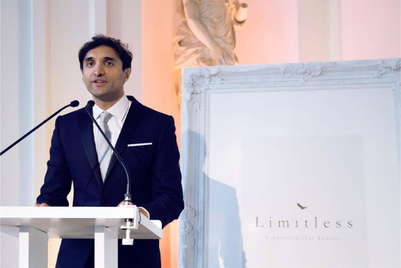
In just three months leading to the Christmas season in Japan, How do you live? - a manga adaptation of a book first published in 1937 - sold over 1 million copies. Set against the background of early wartime Japan, the book focuses on the trials and tribulations of its 15-year-old junior-high student protagonist, and the thoughtful mentoring advice he receives from his uncle. Japan’s godfather of animation, Hayao Miyazaki, came back from retirement to produce a full-length feature film based on the book, and a long parade of talents and celebrities including journalist Ikagami Akira and comedian Watanabe Naomi showered the story with praise and accolade. How did a forgotten, 80-year-old volume become such an all-encompassing phenomenon touching millions of consumers?
“Pop-Education”
Japan’s business magazine Toyo Keizai, ascribes the book’s success to a longer-term trend they dub as “The Popularisation of Education” (教養のポップ化). As AnAn magazine former editor confirms, the hardest hurdle for the project initiators was to make younger readers in Japan connect with an 80-year-old, long and at times weighty text. As in other projects, turning the story into manga and then, animation, is the natural, proven method of making ideas accessible to larger audiences. But there is something deeper here than a simple medium preference. Just last year, Unko Kanji Drill: a series of textbooks championed by an intellectual-looking turd, became a huge hit, spanning an entire brand of self-study aids. Japanese consumers are seeking playful, gamified experiences that will also teach them something. Effortless, fun learning is also the promise behind How do you live?, a famous masterpiece delivered in simple visual form and catering to consumer’s desire for self-development.
Surprisingly, the Pop-Education trend power does not come from the book market. In the last 15 years, traditional bookshops in Japan closed at a pace of at least one per day. And still, brands like Muji, Tsutaya, and even Seven Eleven continuously use books to lure consumers into their retail spaces. The term Neo-Shoten (Neo-Bookshop) was recently coined to describe the multiple restaurants, cafes or fashion retail spaces that sell, or display books beside other products. Initially, publishers believed people tend to pick up books when the context is more related to lifestyle and culture than to acquiring knowledge—a function that almost completely served today by the internet. Brands, however, use the opposite insight: picking up a lifestyle book, for example, might convince shoppers to spend longer times in retail spaces, and connect with the brand in a more meaningful way. Seen apart, books and retail are declining categories, but the Japan case proves that together they can thrive.
Nostalgic reading
In the last few years, dead artists and anniversary albums, generated more sales than younger, or newer ones. 1980s new wave band Depeche Mode is generating more ticket sales for its concerts than it ever did, surpassing younger stars like Justin Bieber or Bruno Mars. According to research company Pollstar, US$7.3 billion of ticket sales in 2017 came from bands like Guns & Roses or U2, who released their most successful albums 30 years ago. In Japan, 90’s pop star Namie Amuro's announcement of her last tour received more attention from brands and consumers than any other musical act in 2017.

The same is true for reading. The publisher of How do you live? claims the book is read by people from all ages, genders and backgrounds, but in fact, the main target driving sales were men in their 40s-60s who read the original book. Re-reading and re-listening represent stronger motivation in a market where the average consumer age is 46. In all cases the trigger might be a comeback, a farewell tour or a re-adaptation of a famous work that’s picked up by Japan’s most powerful consumers, who in turn facilitate the mass exposure needed to reach new audiences.
Experience and perspective
In How do you live? the protagonist, Kopero-kun, is facing a string of initiation moments into Japanese society which are used by his older uncle as the pretext for short essays on the true meaning of life. The uncle writes his essays in a special notebook the two communicate through. In the manga version, these essays remain untouched, and appear as in the original book, while the short “moments” or realisations are visualised in manga form. For younger, distracted consumers, obsessed with their LINE chats, tweets and Instagram moments, the book is an introduction course to long-form reading since it builds on the relevancy of brief experiences to deeper life lessons. As the book’s Amazon reviews reveal, the manga version enabled parents to convince youngsters to read the book. The generational gap of 1937 managed somehow to replicate itself in 2017: key “growing up” moments are linked to valuable opportunities for direction and guidance from the wise and experienced.
How do you live? is the book’s ending question and call to action. When Koperu makes his own choice, he asserts his freedom. Readers, however, are encouraged to make their own choice, inspired by what they have learned. Last year, a successful Twitter campaign by a public library in Kamakura invited students who contemplate suicide to come to the library instead. The library manager, Takashi Kikuchi, explained that he approved the campaign since he believed that more than being a protected, safe-space, browsing books in a library can make young students change their outlook on life. Parents in Japan today want their kids to understand the same thing: reading can be a life-altering experience, regardless of your final opinions or choices. How do you live?'s success in connecting generations builds on this message. The volatility and distraction of 1937 never changed, and neither our endless capacity to learn from experience and finally, make our own choices.
Omri Reis is a strategic planner at AKQA Tokyo.


.jpg&h=334&w=500&q=100&v=20250320&c=1)



.png&h=334&w=500&q=100&v=20250320&c=1)
.png&h=334&w=500&q=100&v=20250320&c=1)


.png&h=334&w=500&q=100&v=20250320&c=1)


.jpg&h=268&w=401&q=100&v=20250320&c=1)


.jpg&h=268&w=401&q=100&v=20250320&c=1)
.png&h=268&w=401&q=100&v=20250320&c=1)

